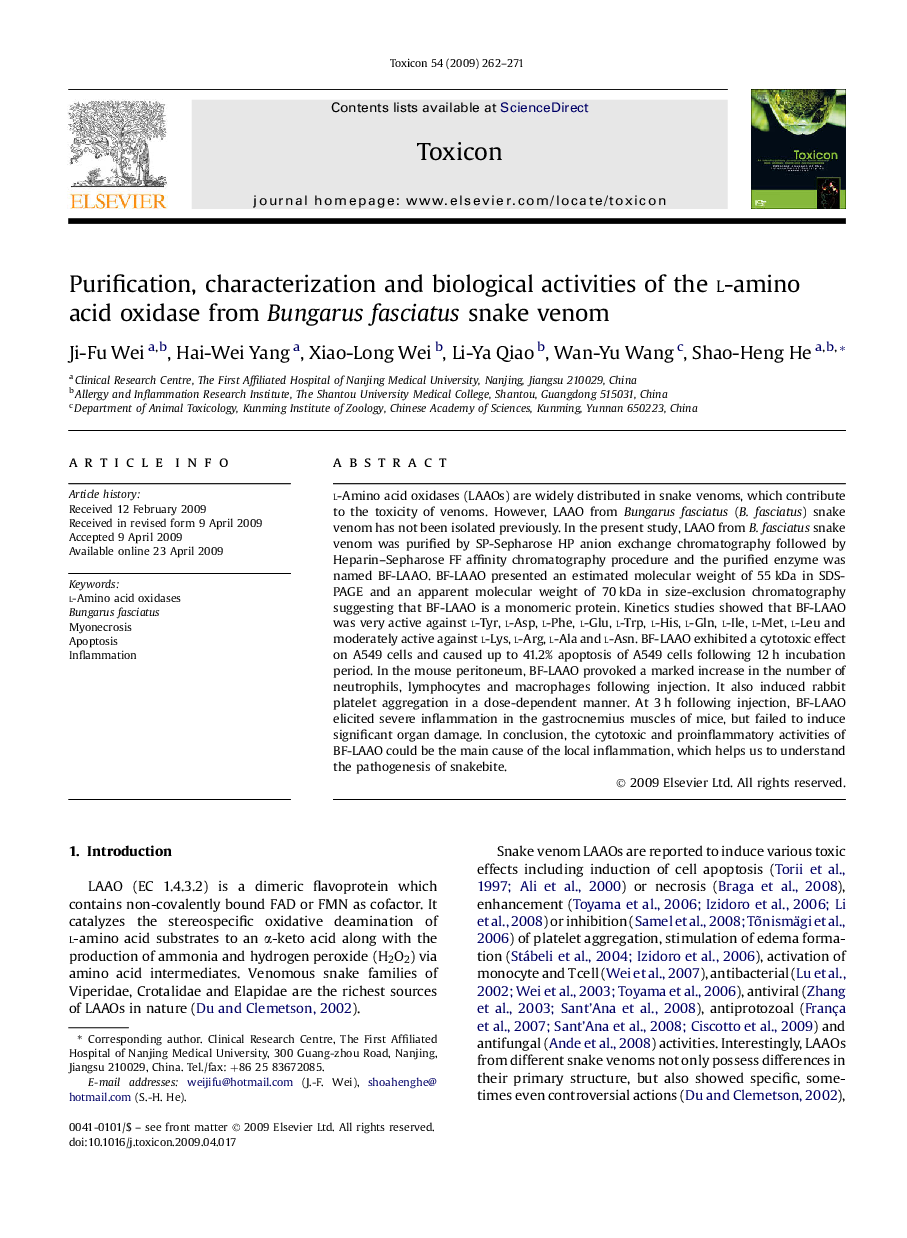| Article ID | Journal | Published Year | Pages | File Type |
|---|---|---|---|---|
| 2066426 | Toxicon | 2009 | 10 Pages |
l-Amino acid oxidases (LAAOs) are widely distributed in snake venoms, which contribute to the toxicity of venoms. However, LAAO from Bungarus fasciatus (B. fasciatus) snake venom has not been isolated previously. In the present study, LAAO from B. fasciatus snake venom was purified by SP-Sepharose HP anion exchange chromatography followed by Heparin–Sepharose FF affinity chromatography procedure and the purified enzyme was named BF-LAAO. BF-LAAO presented an estimated molecular weight of 55 kDa in SDS-PAGE and an apparent molecular weight of 70 kDa in size-exclusion chromatography suggesting that BF-LAAO is a monomeric protein. Kinetics studies showed that BF-LAAO was very active against l-Tyr, l-Asp, l-Phe, l-Glu, l-Trp, l-His, l-Gln, l-Ile, l-Met, l-Leu and moderately active against l-Lys, l-Arg, l-Ala and l-Asn. BF-LAAO exhibited a cytotoxic effect on A549 cells and caused up to 41.2% apoptosis of A549 cells following 12 h incubation period. In the mouse peritoneum, BF-LAAO provoked a marked increase in the number of neutrophils, lymphocytes and macrophages following injection. It also induced rabbit platelet aggregation in a dose-dependent manner. At 3 h following injection, BF-LAAO elicited severe inflammation in the gastrocnemius muscles of mice, but failed to induce significant organ damage. In conclusion, the cytotoxic and proinflammatory activities of BF-LAAO could be the main cause of the local inflammation, which helps us to understand the pathogenesis of snakebite.
